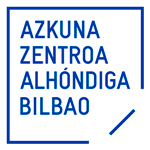
Palencia, 1982. She lives and works from Madrid, combining illustration with teaching. Her work as an illustrator is versatile: she collaborates with magazines and national and international editorials, communication agencies and design projects.
In this time her work has been recognized in various contests, highlighting the Children’s Book fair in Bologna, the Portuguese biennial Illustrarte, The Ibero-American Illustration Festival, the Golden Pinwheel of Shanghai, Nami Island of South Korea or the annual Communication Arts.
In parallel, she develops personal projects in which she approaches illustration from a more experimental perspective, collaborating with galleries such as Casa Kanú in Bogota, Ó! Gallery in Portugal and La Fábrica in Spain.
She has a degree in Fine Arts from the Complutense University of Madrid.
Share:
The formal research on the composition became one of the main interests of my work. My objective is to develop not so conventional compositions that, on one hand, actively collaborate in the narration and that, on the other, bring illustration closer to other visual disciplines.
With the project that I am doing in Rome, I question until what point the compositive structure has an impact on the narration, taking Italian reredos’ as objects of analysis.
The structure of the reredos’ resembles that of any editorial composition, in that from a geometric set up a graticule is built to organize the information. The classic structure divided in streets and encasements, enables the co-existence of various arguable layers and timelines in one same piece, facilitating a multiple tale, polyhedral and coral. The comic as well as the reredos have the capacity of representing the duration of the story in the space of the support.
To work from a structure allows me to use the same images time and again, relocating them and giving them a new meaning depending on their disposition in the space and of some in respect to others. In the end, a narration is generated that is susceptible to recompose from a game of association.
The project materializes in an exhibit in which the relation between drawings and the expositive space acquires a main role, and a publication, in which I intend to transfer the physicality and the tridimensionality of the altar piece to paper, playing with the creases and the unconventional methods of binding, using the resources of paper itself (size, format and body) as a graphic resource that collaborates with the reading experience.
A veces las cosas no son como una espera. (Sometimes things don’t turn out as one had hoped)
I was awarded the grant with a project that was only an outline, a place to begin. I like to work like that, the few times that my professional commitments allow me to, as it obliges me to pay attention to what happens and detach myself from the results. It’s uncomfortable and complicated, but it’s when I learn the most.
The institution itself even encouraged us to consider the process as dérive, inviting us to let ourselves get lost, and facilitated a space of freedom and trust.
I face the personal projects in an anarchic way, I have no method, so the process was knocked down quite a bit. The calendar that I had foreseen came apart, almost upon arrival. The creative process is also, and above all, an exercise of dismissing. To choose naturally implies to renounce everything that you are not going to do. In Rome I felt it more difficult than ever to specify and I postponed taking decisions to the very end: the stimuli of the city are overwhelming; I am used to working with shorter deadlines and more limited necessities. So much time spent searching for freedom to end up missing the shackles.
Taking the concept of reticule to the limit, the narrative of the project is also built around a module of repetition of the experience in the Academy: attempt and failure. On that premise I find paradigmatic characters that work as protagonists in this story of specular autofiction: Sísifo, who pushes a stone uphill every day that inevitably falls back down once it reaches the top, Penelope, who does and undoes her chores in a cycle, and also the Coyote, the eternal failure condemned to chase the Road Runner unsuccessfully. These characters also serve to reflect on the concept of work in itself, the productive use of time or the not doing as a conscious political positioning.
And after, COVID-19. I don’t want to obviate it, as it was important and was imbued in everything: the process, the project, my relationship with the city (with which I live and that I left behind) and with the other residents. From what affects the project more directly (cancelling the programmed trips for the research, the suspension of the Open Studios and the difficulties of production) to more personal aspects: difficulties to concentrate, reorganizing priorities and responsibilities, working empathy, and managing loss.
To sum these 9 months up I need time and distance, it is early to draw conclusions. It has been an enormous experience.
